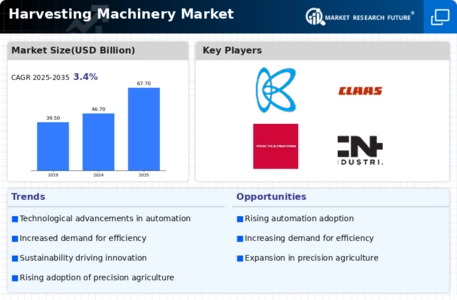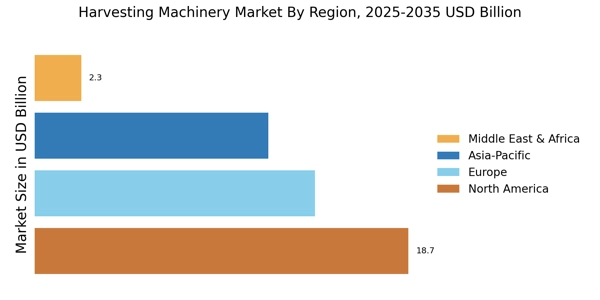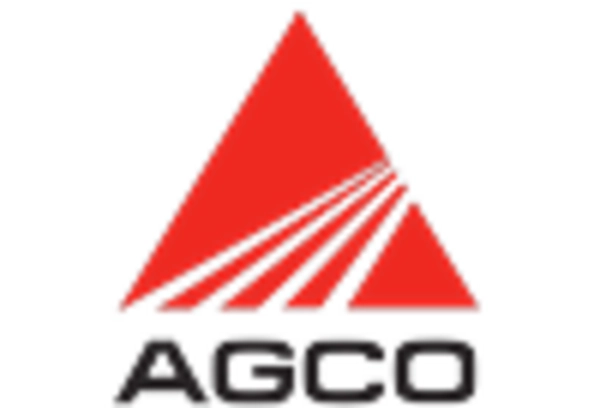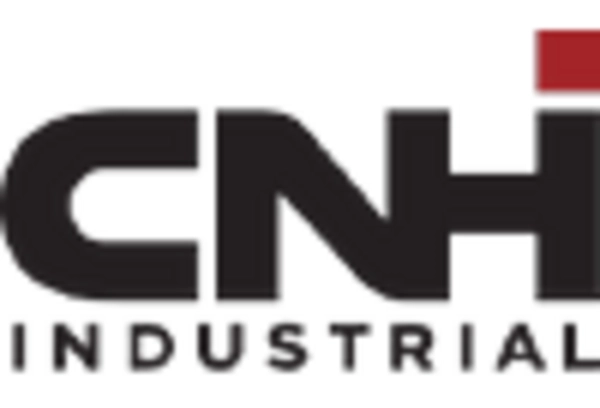Expansion of Agricultural Land
The expansion of agricultural land, driven by urbanization and the need for increased food production, is a key driver for the Harvesting Machinery Market. As more land is converted for agricultural use, the demand for efficient harvesting solutions rises correspondingly. Recent statistics reveal that agricultural land is projected to increase by 10% by 2030, necessitating the use of advanced harvesting machinery to manage larger areas effectively. This trend suggests that the Harvesting Machinery Market will continue to thrive as farmers seek to optimize their operations and enhance productivity on newly cultivated lands.
Focus on Sustainable Agriculture
The growing emphasis on sustainable agricultural practices is influencing the Harvesting Machinery Market. Farmers are increasingly seeking machinery that minimizes environmental impact while maximizing efficiency. This shift towards sustainability is prompting manufacturers to develop eco-friendly harvesting solutions, such as equipment that reduces fuel consumption and minimizes soil compaction. Market analysis indicates that the demand for sustainable harvesting machinery is expected to grow by 25% over the next five years. As consumers become more environmentally conscious, the Harvesting Machinery Market is likely to adapt by offering products that align with these sustainability goals, thereby attracting a broader customer base.
Government Support and Subsidies
Government initiatives aimed at promoting agricultural mechanization are likely to bolster the Harvesting Machinery Market. Various countries are implementing policies that provide financial assistance and subsidies to farmers for the purchase of modern harvesting equipment. This support not only encourages the adoption of advanced machinery but also enhances overall agricultural productivity. For example, recent reports indicate that countries investing in agricultural mechanization have witnessed a 15% increase in crop yields. Such government backing is expected to create a favorable environment for the Harvesting Machinery Market, as it facilitates access to innovative technologies and encourages sustainable farming practices.
Rising Demand for Food Production
The increasing global population drives a heightened demand for food production, which in turn propels the Harvesting Machinery Market. As agricultural practices evolve, farmers are compelled to adopt advanced harvesting machinery to enhance efficiency and yield. According to recent data, the demand for food is projected to rise by 70% by 2050, necessitating the use of mechanized solutions. This trend indicates that the Harvesting Machinery Market is likely to experience substantial growth as producers seek to meet these escalating food requirements. Furthermore, the integration of precision agriculture techniques is expected to further stimulate the market, as farmers utilize data-driven approaches to optimize their harvesting processes.
Technological Innovations in Machinery
Technological advancements play a pivotal role in shaping the Harvesting Machinery Market. Innovations such as automation, artificial intelligence, and IoT integration are revolutionizing harvesting processes. For instance, the introduction of autonomous harvesters has the potential to significantly reduce labor costs and increase operational efficiency. Market data suggests that the adoption of smart harvesting technologies could lead to a 20% increase in productivity. As these technologies become more accessible, the Harvesting Machinery Market is poised for growth, with manufacturers focusing on developing machinery that incorporates cutting-edge features to meet the evolving needs of farmers.


















Leave a Comment